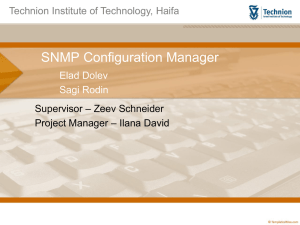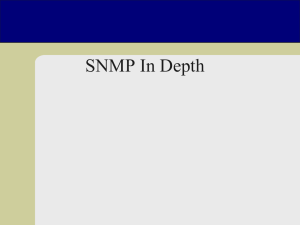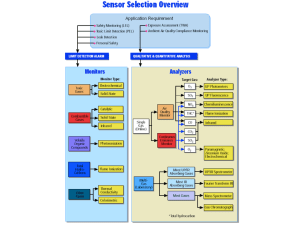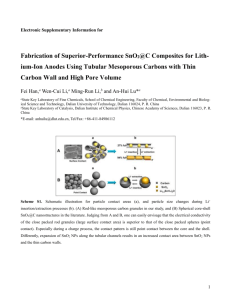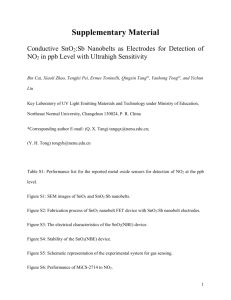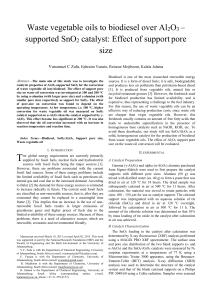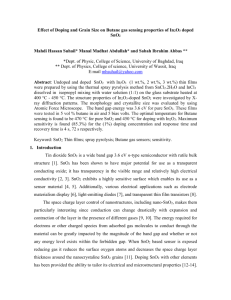Supplementary Information (doc 2411K)
advertisement
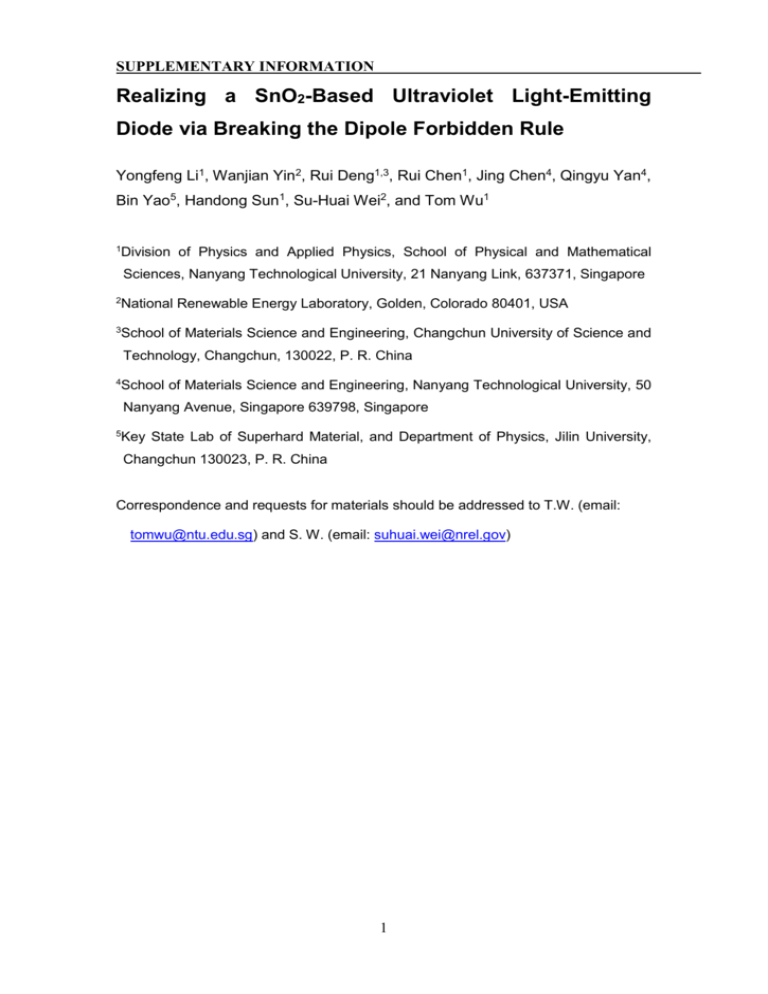
SUPPLEMENTARY INFORMATION Realizing a SnO2-Based Ultraviolet Light-Emitting Diode via Breaking the Dipole Forbidden Rule Yongfeng Li1, Wanjian Yin2, Rui Deng1,3, Rui Chen1, Jing Chen4, Qingyu Yan4, Bin Yao5, Handong Sun1, Su-Huai Wei2, and Tom Wu1 1 Division of Physics and Applied Physics, School of Physical and Mathematical Sciences, Nanyang Technological University, 21 Nanyang Link, 637371, Singapore 2 National Renewable Energy Laboratory, Golden, Colorado 80401, USA 3 School of Materials Science and Engineering, Changchun University of Science and Technology, Changchun, 130022, P. R. China 4 School of Materials Science and Engineering, Nanyang Technological University, 50 Nanyang Avenue, Singapore 639798, Singapore 5 Key State Lab of Superhard Material, and Department of Physics, Jilin University, Changchun 130023, P. R. China Correspondence and requests for materials should be addressed to T.W. (email: tomwu@ntu.edu.sg) and S. W. (email: suhuai.wei@nrel.gov) 1 SUPPLEMENTARY INFORMATION I. First-principles calculation details For bulk SnO2, an 30-atom supercell was used in the band structures and optical properties calculations. The k ponits sampling is (6×5×2). The band structure plotted in Fig. 1a in the main text is for kz = 0. For (101) surface, a slab with 30-atom supercell and a vaccum layer of 10 Å was used, and the k ponits sampling is (6×5×1). The SnO2 QD’s are cut from the rutile bulk SnO2. The QD shown in Fig. 1 in the main text includes 52 Sn and 93 O atoms. The dangling bonds on the surface are saturated by both pseudo H (with valence charge 2/3 or 3/4) and real H to mimic the complicated surface structure connecting to amporphous SnO2 in the experiments. To simulate oxygen vacancy (VO), an oxygen atom inside QD was removed from the inside of QD (Fig. S1). The method used in optical calculation is based on the single electron approximation. Only direct transition from valence bands to conduction bands is considered. Indirect transition and electron-hole interaction are not included in the current calculations. 2 SUPPLEMENTARY INFORMATION Figure S1. (a) Partial charge density of LUMO of a SnO2 QD with a 2+ charged oxygon vacancy (VO) inside. The character of LUMO is around the VO site. (b) Energy levels and the corresponding optical absorption spectrum of SnO2 QD with VO. For comparison, the absorption spectrum of SnO2 QD without VO is also shown. Because of VO, the optical band gap (the onset energy of optical absorption) of the QD with VO is reduced by 0.6 eV, indicating that the VO inside QD is really deep and makes significant optical gap reduction. Considering the amount of 0.6 eV is determined by GGA, this amount is larger in reality, and the real optical gap should be in the range of the visible light. Thus, defects within the QD appear to be responsible for the visible light emission which is often observed in SnO2 materials with low crystalline quality but not the UV light emission observed in this work. 3 SUPPLEMENTARY INFORMATION II. Experiments (a) (b) (c) (d) Figure S2. Scanning electron microscopy (SEM) images of (a) the as-grown and the SnO2 films annealed at (b) 400, (c) 600 and (d) 800 °C in air. The as-grown and the 400 °C annealed samples show rather smooth surfaces. After annealing at 600 and 800 °C, the sample surfaces become much rougher as a result of crystallization. 4 SUPPLEMENTARY INFORMATION (b) (a) Figure S3. (a) Additional high-resolution transmission electron microscopy (HRTEM) image taken on the 400 °C annealed SnO2 film. The distribution of nanocrystal size is mainly in the range of 2-6 nm, and the nanocrystals are surrounded by amorphous SnO2 matrix to form the nanocrystalline/amorphous hybrid structure. (b) The grain size distribution of the nanocrystalline sample annealed at 400 °C. The obtained mean grain size of 3.7 nm is in fairly good agreement with the results of Raman spectroscopy. 5 SUPPLEMENTARY INFORMATION Figure S4. 10 K PL spectra of the SnO2/quartz films annealed at 400 °C. Four peaks were observed. The peak at 3.36 eV can be fitted to three sub-peaks, which are located at 3.355, 3.362 and 3.369 eV, and attributed to neutral-donor-bound-exciton (D0X) [1, 2], transition from conduction band to acceptors (eA0) [3] and free-exciton (FX) [2], respectively. The peak at 3.308 eV can be assigned to radiactive recombination of donor-acceptor pair (DAP) [1, 4]. The peaks at 3.236 and 3.163 eV can be ascribed as the first- and the second-order longitudinal optical (LO) phonon replica of DAP, i.e., DAP-1LO and DAP-2LO, respectively. 6 SUPPLEMENTARY INFORMATION Figure S5. (a) Excitation power dependent PL spectral of SnO2 nanocrystalline/amorphous hybrid film annealed at 400 °C. (b) The DAP peak intensity and energy as a funcation of excitation power. The peak energy of DAP emission can be expressed by the equation: EDAP= Eg - ED - EA + e2/4πεr, where Eg is the band gap energy, ED and EA are the donor and acceptor binding energies, respectively, e is the electron charge, ε is the dielectric constant and r is the donoracceptor pair distance. With the increase of excitation power, the amount of the excited donor-acceptor pairs increases; as a result, the donor-acceptor pair distance decreases. Consequently, the DAP peak shows a blueshift. The blue line in Figure 3b is the integrated PL intensity of the DAP band. Meanwhile, the PL intensity increases with increasing the exciation power. The excitation power dependent PL measurement further provides the evidence that the 3.308 eV emission originates from the DAP radiative recombination. 7 SUPPLEMENTARY INFORMATION Figure S6. (a) Temperature-dependent PL spectra of the SnO2/quartz films annealed at 400 °C. (b) Corresponding to normalized PL spectra for clearly illustrating the peak shift. It was observed that, with increasing temperature, the relative intensity of 3.36 eV emission decreases and totally disappears around 70 K, which is replaced by the FX emission at room temperature. On the other hand, the DAP transition sustains within the whole temperature range. At room temperature, only a broad band at ~3.28 eV was observed. 8 SUPPLEMENTARY INFORMATION Figure S7. (a) Schematic of the SnO2/MgO/p-GaN heterojunction LEDs with lightemitting SnO2 nanocrystals imbedded in the amorphous matrix. Also shown are the drawings of (b) the SnO2/p-GaN and (c) the SnO2/MgO/p-GaN heterojunction LEDs. References [1] [2] [3] [4] R. Chen et al., Appl. Phys. Lett. 95, 061908 (2009). B. Liu et al., J. Phys. Chem. C 114, 3407 (2010). G. Blattner, C. Klingshirn, and R. Helbig, Solid State Commun. 33, 341 (1980). A. Kar et al., Appl. Phys. Lett. 94, 101905 (2009). 9


